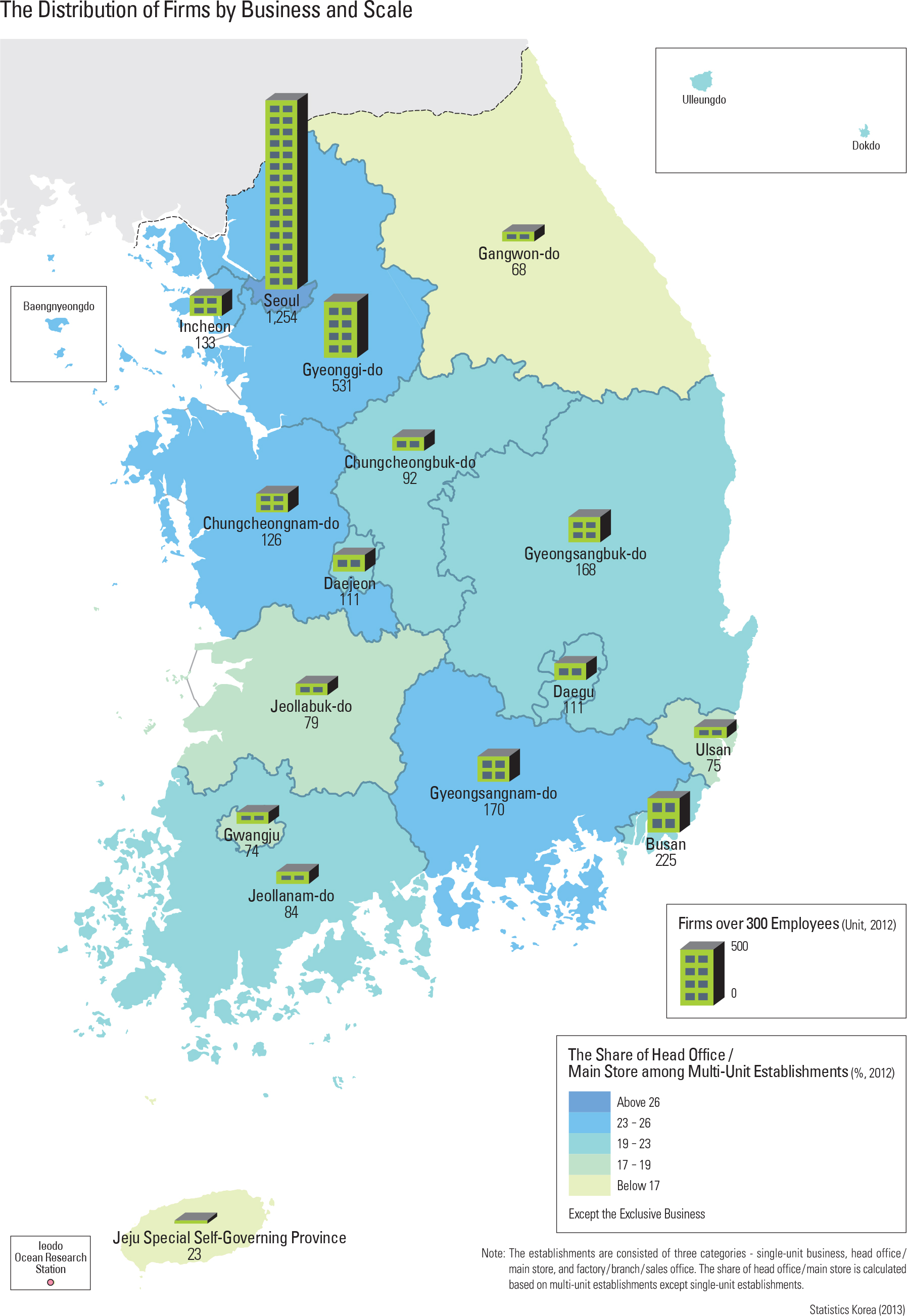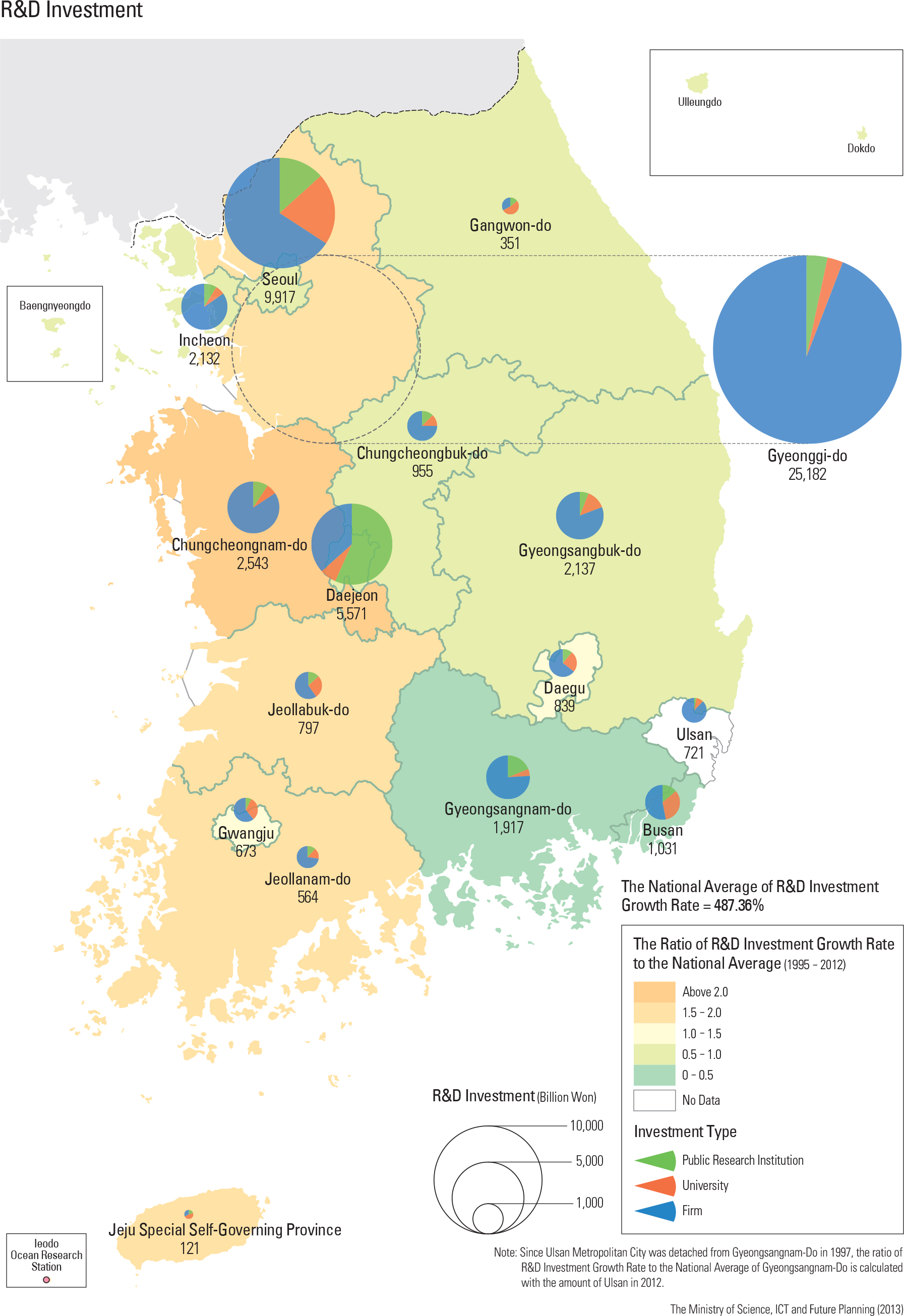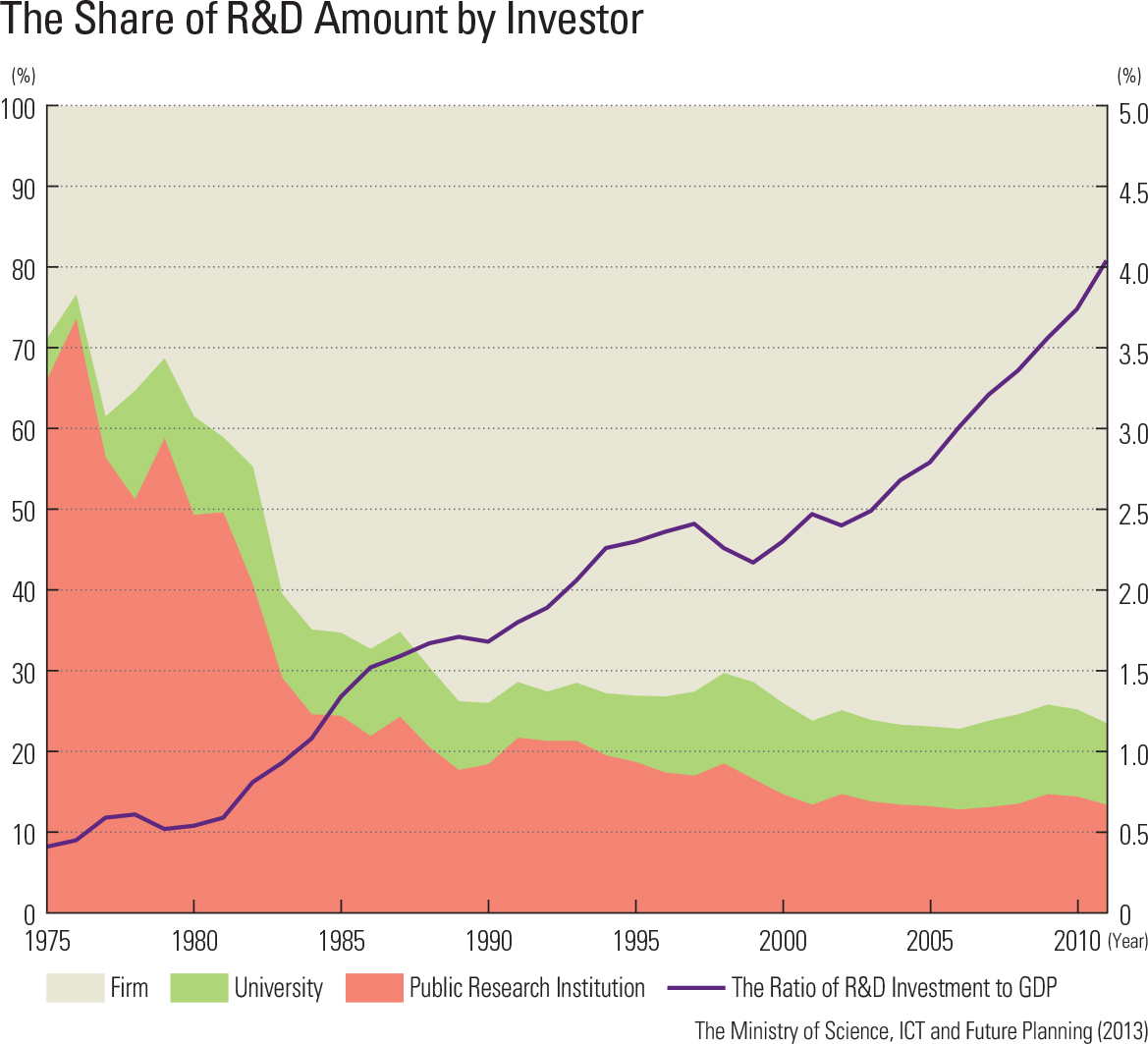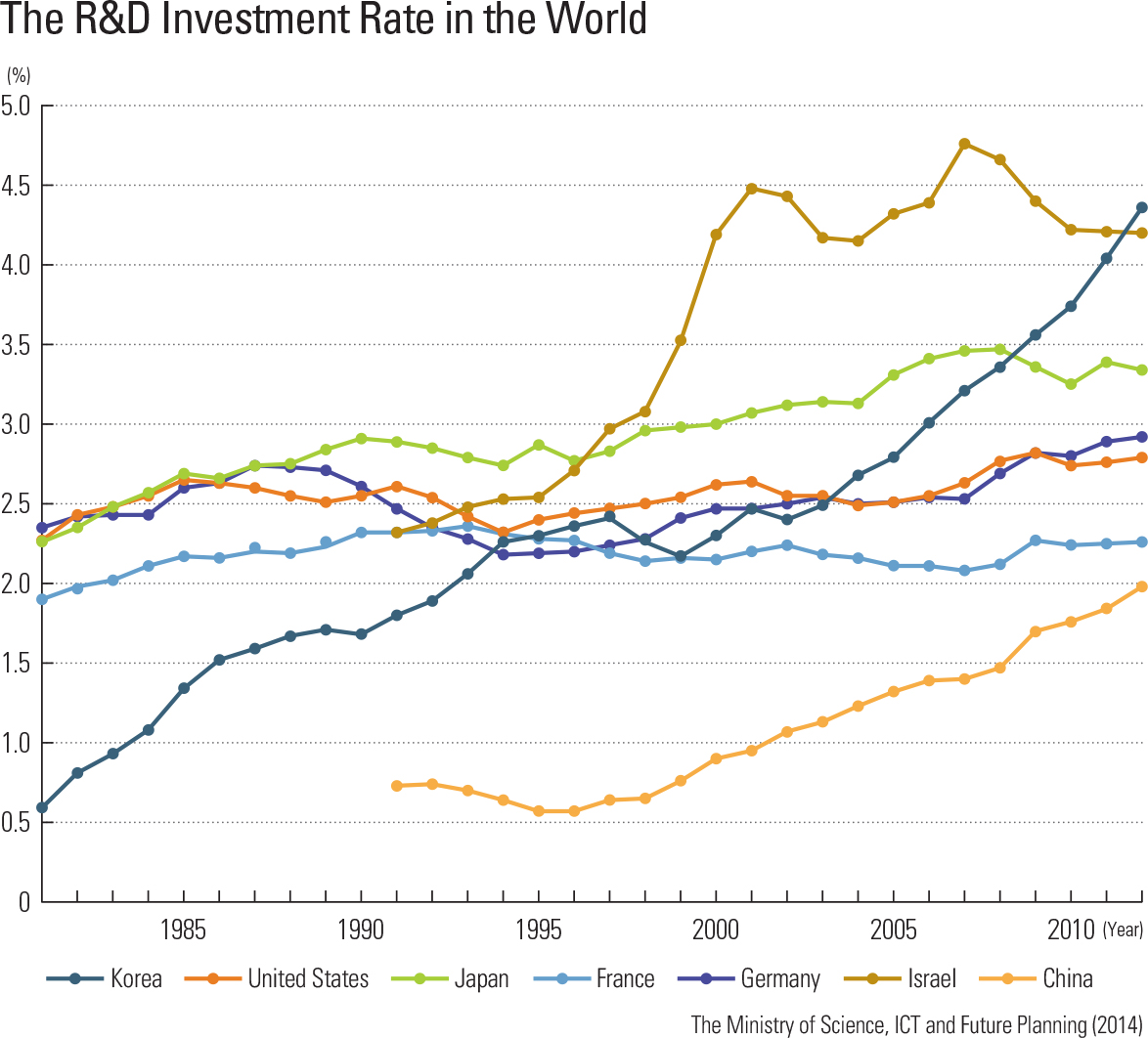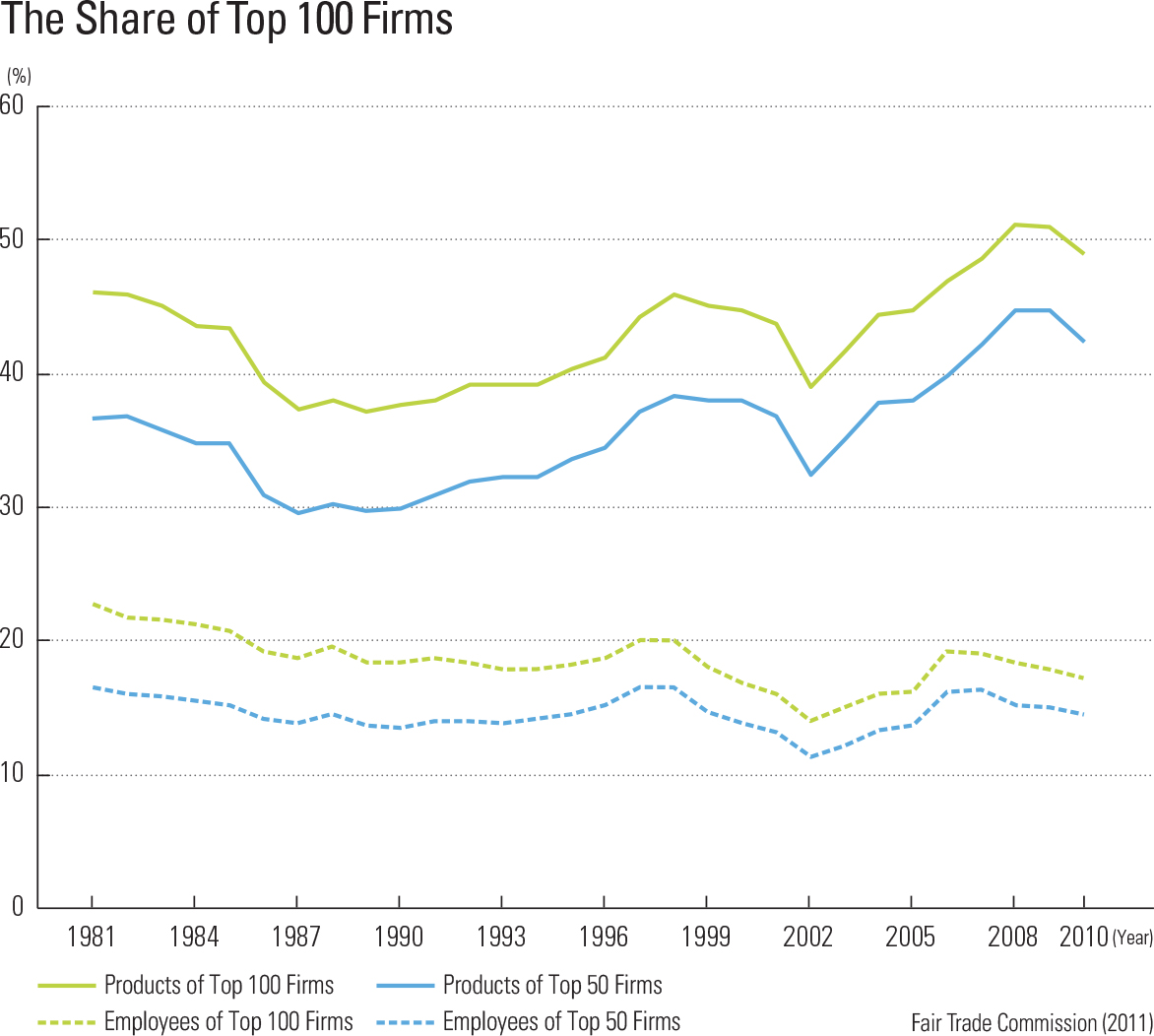Large firms in the export industry played a significant role in Korea’s economic development. As development progressed, these firms became Korea’s chaebols, or conglomerates. Korea’s economy is highly dependent on large firms, and they have become increasingly important since 2000. The top 100 companies account for about 50% of the total billing amount of shipment, and the top 50 companies account for 43% of that number. Of the top 1,000 listed companies based on sales volume, 712 are located in Seoul metropolitan area including 529 in the city of Seoul and 288 outside of the area. Most large firms have their headquarters in Seoul, and of these over 70% are located in the greater capital area, which indicates that many administrative and control functions are concentrated in the capital area.
Korea’s early approach to manufacturing industries focused on component-led light industries until the early 1970s, but after the mid-1970s, it shifted its emphasis toward investment-led heavy chemical industries. After the 1980s, it shifted again toward a focus on innovationled industry by fostering highly skilled human resources and the development of technology. Research and development investment in Korea has increased from less than 1% of the GDP in the early 1980s to above 4% in 2011. This represents much faster growth in the technology sector than in other countries. The investment bodies of research and development changed as well. By the 1970s public research institutes accounted for more than half of the research and development in Korea, but the share of private sector investments rapidly increased to make up more than 70% since the 1980s. The regional breakdown of investment in research and development reveals that Gyeonggi-do makes up 45.4% of the total, Seoul receives 17.9% of the funding, and Incheon receives 3.8%, which means that capital area accounts for more than 67% of the spending on research and development. Additionally, a large number of major research institutes are concentrated in Daejeon.
